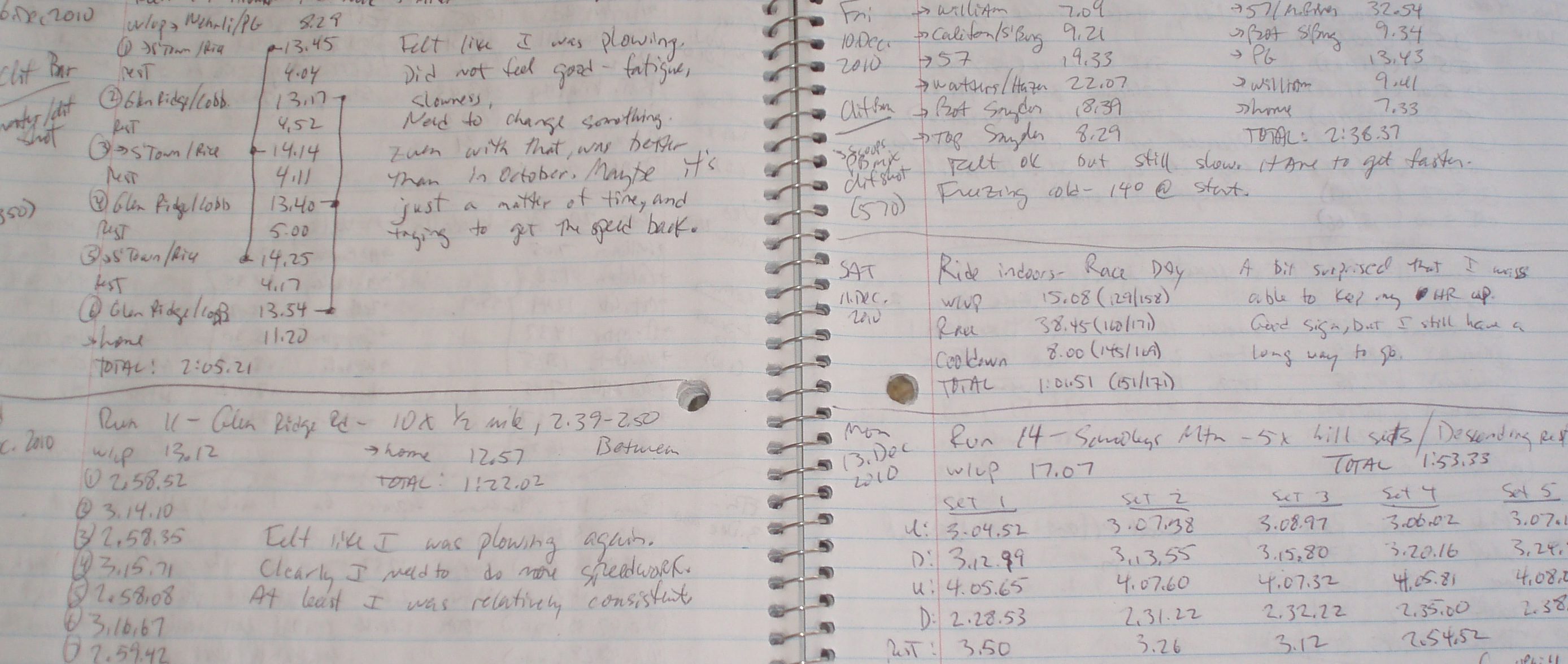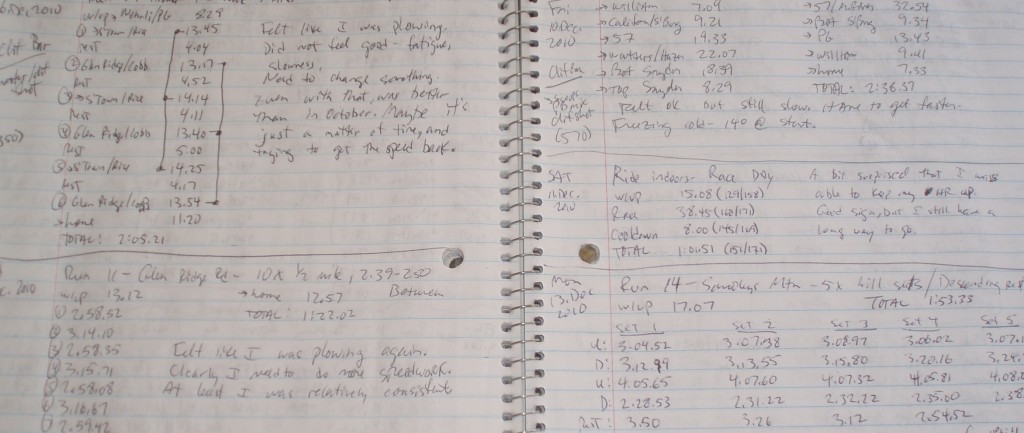Analyze your training logs to become a better runner
One of the useful aspects of keeping training logs is that it provides a great resource for you to review and analyze training patterns that can show you what you’re doing right or wrong

 One of the main differences between successful runners and those who never seem to reach their potential is the planning and preparation of workouts and the commitment to do them on a consistent basis. Many runners keep meticulous training logs on all aspects of their training, racing, weather conditions, any external stressors in their life, injuries, key competitors they ran against and how they felt on their runs. It’s up to you how detailed your want to get.
One of the main differences between successful runners and those who never seem to reach their potential is the planning and preparation of workouts and the commitment to do them on a consistent basis. Many runners keep meticulous training logs on all aspects of their training, racing, weather conditions, any external stressors in their life, injuries, key competitors they ran against and how they felt on their runs. It’s up to you how detailed your want to get.
One of the useful aspects of keeping training logs is that it provides a great resource for you to review and analyze training patterns that can show you what you’re doing right or wrong.
Sudbury, Ont.-based running coach Tim Uuksulainen offers these pointers on how to maximize the use of your training logs:
Get the most with the least
You should train to achieve the best results with the minimal amount of training. This way, there is a buffer to protect against over-training and potential injuries. If you don’t get the results you want, you can then begin to alter the training variables and workload as you get stronger and fitter each year or as your goals become more challenging.
Have a realistic, achievable plan
Your initial goals must be realistic. This is where an experienced coach or fellow runner can assist you. A log can help you grade your performances in relation to the amount of training you’ve done in achieving them. There should be a purpose to each workout, even if only for a recovery. You should know what you are trying to achieve.
Compare training workouts
If you’ve kept a training diary for a number of years, compare the past year against previous years. The quantity and quality of your training in a given year should correlate reasonably well with your results. For masters runners, the age-graded WAVA scores can keep you focused and motivated to keep improving in relative terms.
Follow a progression
Consistency and progression in your weekly, monthly and yearly training are two key building blocks to success. But if you aren’t keeping a track of what you’re doing, you have no reference point for comparison. If you always train within a set training routine week-to-week and month-to-month, your results will likely plateau. The training diary can assist in pointing out what you may want to change in your training variables in order to move ahead.


